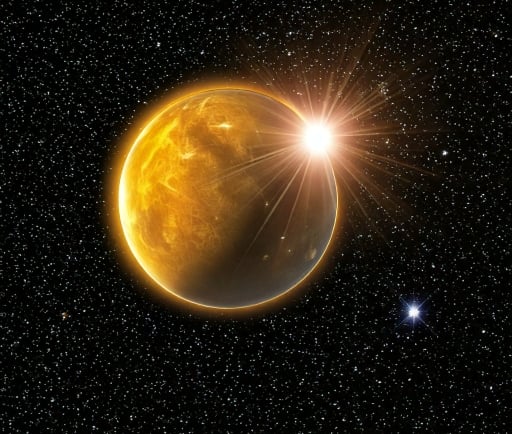V1400 Centauri: The Young Star Eclipsed by J1407b


Introduction to V1400 Centauri
V1400 Centauri, designated as J1407, is a captivating young, pre-main-sequence star located approximately 420 light-years away in the constellation Centaurus. Its discovery has sparked interest among astronomers due to a significant astronomical event that occurred in its proximity. This event involved the free-floating substellar object J1407b, which has been observed to eclipse V1400 Centauri, showcasing an exceptional interaction between celestial bodies.
The Eclipsing Event of J1407b
The stellar phenomenon involving J1407b provides a rare glimpse into the dynamic processes of the cosmos. This object, which is believed to be a sub-brown dwarf, demonstrates complex ring structures that are estimated to be 90% larger than those of Saturn. During the eclipse of V1400 Centauri, the extensive rings of J1407b blocked out the star’s light, creating a temporary shadow that captivated astronomers and researchers worldwide.
Significance of the Study
Studying V1400 Centauri and the substellar object J1407b plays a crucial role in understanding stellar evolution and the formation of planetary systems. The interaction between these two celestial bodies offers insights into how stars and their surrounding environments influence one another during their formative years. The observation of such eclipsing events allows astronomers to gather data regarding the mass, size, and even the potential presence of additional celestial objects orbiting around V1400 Centauri.
Furthermore, the phenomenon presents a unique opportunity to study the properties of J1407b itself, especially its ring system. By examining the light curves during the eclipses, scientists can infer information about the composition and structure of the rings, shedding light on the processes that govern the formation of such intricate systems.
Conclusion
In conclusion, V1400 Centauri stands as an intriguing subject of study, illuminated by the unique interaction it has with J1407b. The eclipsing events provide a window into the early stages of stellar evolution, encouraging further research in the field of astrophysics. As our observational techniques and technologies improve, we may uncover even more secrets held within this remarkable star system, illuminating our understanding of the universe and its myriad celestial wonders.
